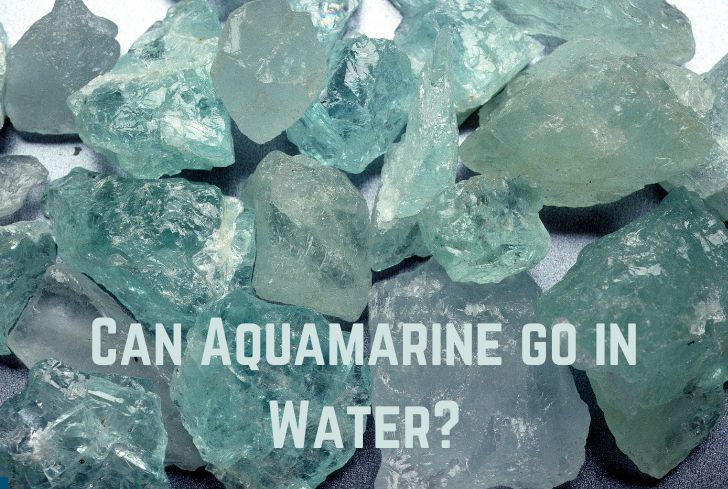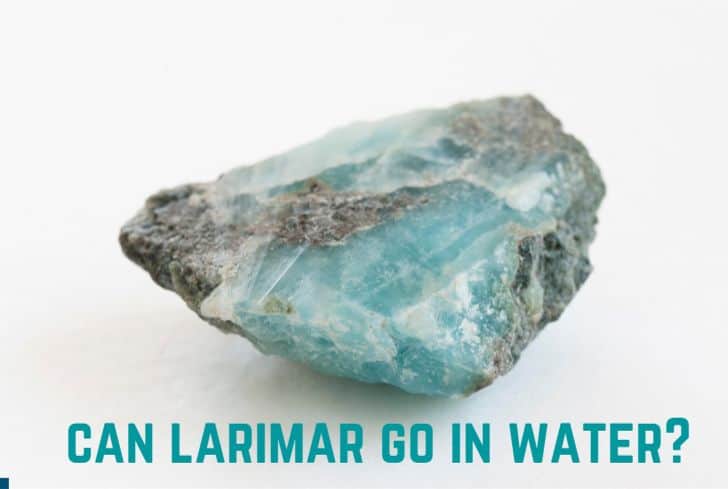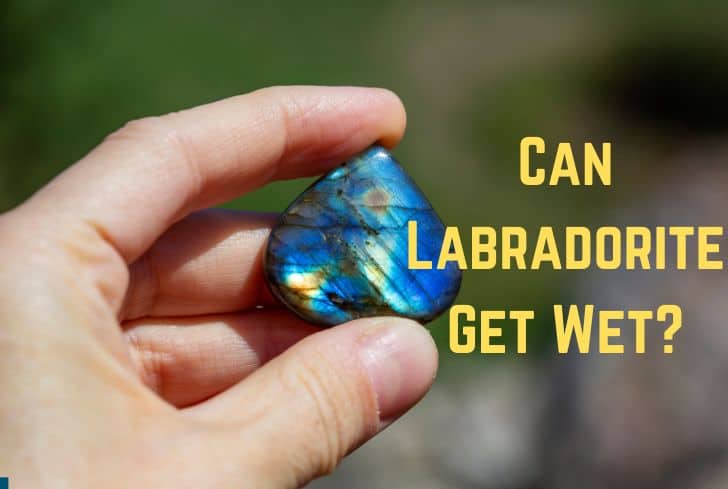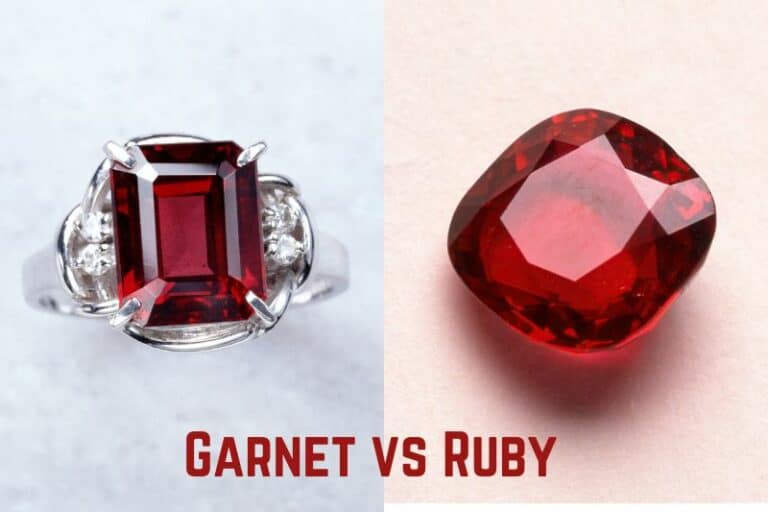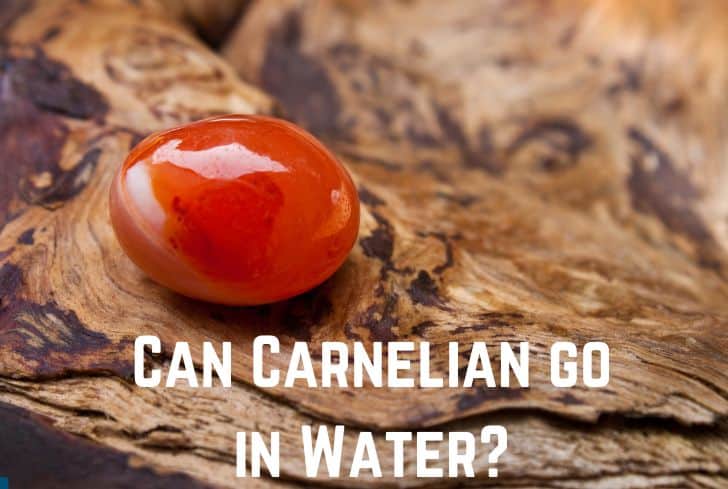Opalite vs Moonstone (Differences & Similarities)
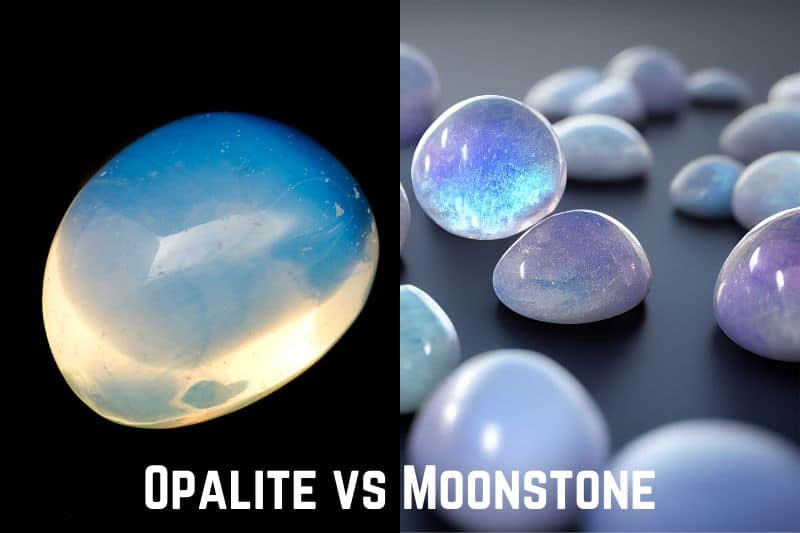
Opalite and moonstone can often be confusing for many people. The term “opalite” itself refers to two things—a type of natural stone and a man-made glass—which further adds to the confusion.
However, in this article, we are going to help you understand the difference between the two. We will begin by briefly looking at the similarities between opalite and moonstone. Then we will discuss how they differ across various properties like chemical composition, pattern, hardness, etc. Finally, we will learn to take care of them and about their uses.
Read: Quartz vs Diamond (Differences & Similarities)
What is Opalite?
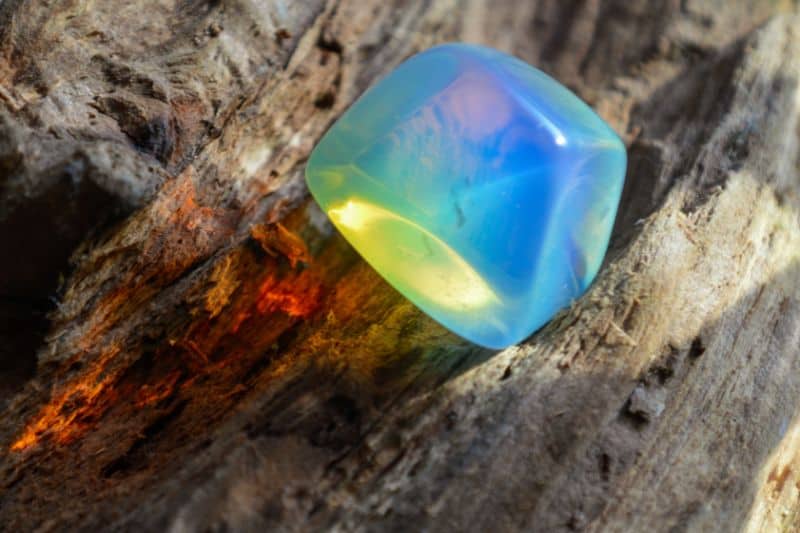
Opalite is a man-made glass that is often used as a substitute for natural opal. It is a type of opalescent glass that has a milky or iridescent appearance and is often used in jewelry making. Opalite is composed mainly of dolomite, quartz, and fluorite, which are melted together to create a glass-like material.
It is also known by other names, such as sea opal, opal moonstone, and Tiffany stone. Opalite is believed by some to have healing properties and is used in crystal healing practices. It is found in many different colors, including white, blue, and pink, and is often used in pendants, earrings, and bracelets.
What is Moonstone?
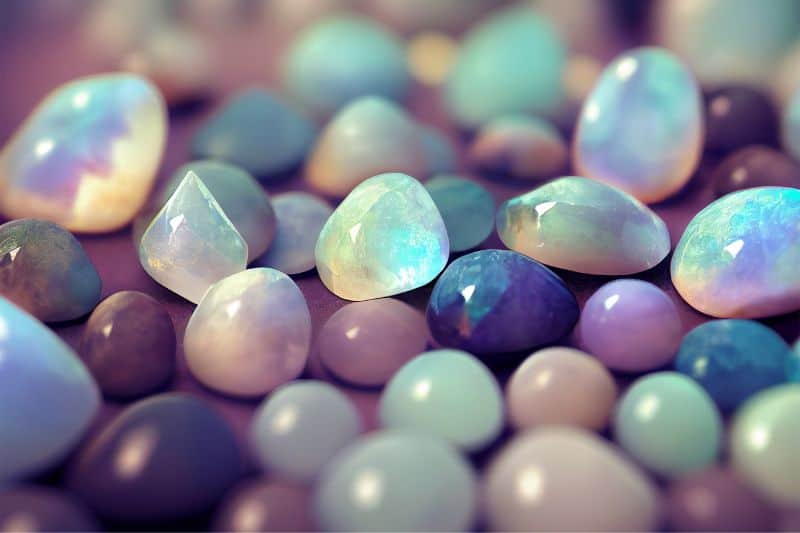
Moonstone is a type of feldspar mineral that is known for its iridescent sheen, which gives it a milky or pearly appearance. It can come in a variety of colors, including white, gray, peach, and blue.
Moonstone is often used as a semi-precious gemstone in jewelry making and is believed by some to have spiritual and healing properties. It is found in several countries around the world, including India, Sri Lanka, and the United States.
Moonstone is often associated with the moon and is said to enhance intuition, promote emotional balance, and bring about calm and peaceful energy. It has been used for thousands of years in jewelry making and was highly valued in ancient cultures such as the Romans and Greeks.
Similarities Between Opalite and Moonstone
Opalite and Moonstone are often confused because of their similarities.
They are both popular and affordable gemstones that are commonly used in jewelry. Sometimes, they can also look a little similar as both display iridescence (although of different kinds).
However, both gemstones are quite different in most aspects—from chemical composition to hardness. So, let us now look at the differences between the two.
Differences Between Opalite and Moonstone
Chemical Composition
Opalite (or its popular variant) is man-made while moonstone is natural.
The term “Opalite” is used for two different things. Firstly, it is used to refer to common opal, which is a natural stone that lacks “play-of-color” (which is seen in “precious opal”). Secondly, it is also a marketing name for man-made opalescent glass that looks like opal and moonstone.
Common opal is usually found in the same localities as precious opal, that is, areas associated with volcanic activity, like ashfalls. It is also found in sedimentary rocks in areas with an arid climate. The minimal rainfall dissolves silica and deposits it in fractures and cavities.
The man-made variant of opalite has the appearance of opal but is composed of glass or plastic. It is usually called “imitation opal”/“opal simulant” in retail settings. Its specimens do not have the properties of natural opal, but using resins, they can be made to exhibit a play of color.
Moonstone, on the other hand, is a natural gemstone of the orthoclase feldspar group. The most common type of moonstone is called “adularia”, which acquired its name from an early mining site near Mt. Adular in Switzerland.
Two feldspar species, orthoclase and albite, combine to make moonstone. Its exact chemical composition can depend on variety, but it is often represented through the formula of (Na, K)AlSi3O8. Here Na and K denote the combination of sodium and potassium ions, which can vary in proportion.
There is another gemstone, known as Rainbow Moonstone. However, this is not a moonstone. It is a variety of Labradorite that exhibits adularescence in various colors, hence its name.
Color
Opalite and moonstone both differ in different aspects of appearance, including color.
Opalite has a milky or translucent appearance, usually with a pale bluish or milky white color. Sometimes, it can appear more glassy and clear than natural moonstone.
Moonstone, on the other hand, comes in a wider range of colors. It can be white, peach, gray, and even green. However, it is still known for its bluish or pearly white adularescence, which we will discuss below.
Pattern and Clarity
The most distinguishing factor between opalite and moonstone is their clarity.
Moonstone is known for its unique visual effect known as adularescence. Moonstone is made up of two feldspar minerals (orthoclase and albite) that are stacked in layers. When light shines on the stone, these thin, flat layers uniquely scatter the light.
This causes a gorgeous shimmering glow that moves across the gem and even changes its look as you move the stone. This resembles the appearance of the moon on a cloudless evening, which is what gives the stone its name.
Opalite, on the other hand, does not have this beautiful visual effect. It may have some level of iridescence but that is much less significant than moonstone’s. This is also why the stone has a consistent color, unlike moonstone whose sheen creates an ethereal, ever-changing appearance.
In terms of texture, opalite has a smooth, glass-like texture. Moonstone, on the other hand, has a finer, almost silky texture that contributes to the play of colors.
Hardness
Moonstone is slightly harder than opalite.
Mohs Hardness Scale is a measure of the relative resistance of minerals to scratching. Besides resistance to scratching, the scale also helps us understand a mineral’s relationship to water. A value of 5 or above on the scale means that the mineral can survive underwater.
Opalite has a value of 5.0-6.5 on the Mohs Hardness Scale and is a moderately hard mineral. Moonstone, on the other hand, has a value of 6.0-6.5, which makes it somewhat harder than opalite.
However, both these stones are barely above the minimum threshold required to be safe underwater. Therefore, they should not be immersed for long. Otherwise, water can dull their colors or expand their cracks (damaging the stone’s structure).
Moreover, the stones be handled with caution in everyday use. Keep reading to find out how to clean and take proper care of them.
Metaphysical Properties & Zodiac Sign
Both opalite and moonstone are valued for their metaphysical properties.
Opalite is believed to improve communication and remove blockages of the chakras & meridians. It helps people in transitions of various kinds and also in verbalizing our hidden feelings.
It is associated with the Cancer zodiac sign, although it’s not a traditional birthstone.
Check out this video by Crystal Meanings to learn more about Opalite’s spiritual values.
Moonstone is also linked to Cancer, as Cancer is ruled by the moon in astrology. For such individuals, moonstone is believed to improve emotional qualities and intuition. Moonstone also helps us develop compassion and empathy for others.
Location
One variant of opalite is man-made while the other is found in various locations. Moonstone is also widely available.
The man-made variant of opalite is produced by combining dolomite and metal to produce a glassy, opalescent substance. There is no specific geographic location as it is synthetically produced.
Opalite can sometimes also refer to common opal. This is usually found in the same localities as precious opal, that is, areas associated with volcanic activity, like ashfalls. It is also found in sedimentary rocks in areas with an arid climate. Popular mining areas include Peru, Mexico, and Western Australia.
Moonstone, on the other hand, is found in India, Sri Lanka, Madagascar, etc. Because of their wide availability, both stones are quite affordable.
Care
Follow these steps to clean and take care of opalite:
- Rinse it under running water for a few minutes.
- Dry it with a soft fiber cloth.
It is not advisable to soak opalite in water for a long time. Even in the case of man-made opalite, it is better to follow the cleaning method described above.
Besides cleaning, one must be careful with opalite in everyday use too. Being moderately hard, it is prone to get damaged easily. Keep it separate from other crystals as harder ones can scratch its surface. Always take it off when engaged in physical activities like exercising, swimming, etc.
Now let’s talk about taking care of moonstone. Given its hardness of 6-6.5 on the Mohs scale, it is perfectly safe underwater:
- Mix a mild dish detergent with water. You can also use a gentle, non-acidic jewelry cleaner.
- Soak the moonstone in solution for about 3-5 minutes.
- Rinse it under running water to wash off any excess soap.
- Remove the stone and dry it with a soft cloth.
- Remember to roll the stone while drying to ensure all water is removed from the crevices.
You should never use ultrasonic or steam cleaners for moonstone, as they can damage it. Moonstone’s unearthly radiance is what makes it so special but without proper steps, it can lose its gleam.
So, besides cleaning, the stone also needs care in everyday use. Do not wear it during any harsh physical activities like exercising or swimming. When not in use, warp your moonstone in a soft cloth and make sure it doesn’t rub against other gemstones. You can get the stone repolished if it has visible scratches.
Read: Alexandrite vs Amethyst (Properties & Composition)
Uses of Opalite and Moonstone
These are the uses of opalite and moonstone:
- Jewelry: Both gemstones are popular in jewelry, thanks to their beautiful appearance. Moonstone is cherished for its ethereal shimmer, while opalite is also loved for its milky, translucent appearance. They both make great earrings, pendants, and necklaces.
- Lapidary Projects: Besides jewelry, opalite, and moonstone are also used extensively in lapidary projects and decoration. They can be used for making beautiful cabochons, beads, and tumbled stones.
- Spiritual Values: As discussed above, both opalite and moonstone are associated with various metaphysical properties. They are often used for spiritual healing.
Conclusion
In this article, we have discussed the differences between opalite and moonstone. While the two can often be confusing at a glance and have some similarities, they are quite different in many ways. Most importantly, only moonstone has the unique visual effect called adularescence.

